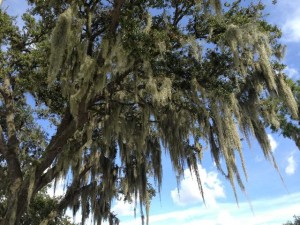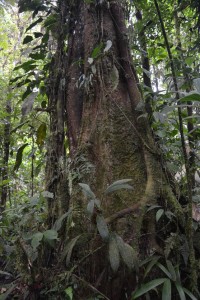According to the Natural History of Ecological Restoration, epiphytes are plants that actually live on other plants, but they are not parasites. They grow on the trunk or branches of other plants, usually trees, but they do not take any water or nutrients from the tree. Instead, they use the tree to grow up, using their leaves and stems to collect water from both precipitation and the air. As the epiphytes help the tree get more water, the epiphytes climb the tree to better access sunlight that they need for photosynthesis.
An example that we may be familiar with in the US is Spanish moss, which is very prevalent in southern states. Though it is actually a bromeliad and not a moss, it is an epiphyte that grows throughout Florida and once was used to stuff upholstery (University of Florida).

Epiphytes are also known as “air plants” because of their growing on other plants and not rooting themselves in the plants at all. This can be both advantageous and detrimental because while they can live symbiotically with the tree they are growing on, they also cannot draw water from any other source in the event of a dry period. They draw in most of their moisture from the air or rain. For nutrients, epiphytes are photosynthetic, meaning that they collect their energy for making nutrients from the sun, but they also can live off of decaying plant matter (Viva Costa Rica).
Specifically, orchids, mosses, ferns, lichens, and bromeliads are the most common types of epiphytes that grow in Costa Rica. Additionally, on coral reefs and seagrass beds, epiphytic algae and bacteria thrive.

Unfortunately, the effects of global warming will also be seen taking tolls in epiphytes in the coming decades. Global warming is causing a phenomenon that moves species from lower elevations up those slopes in an attempt to remain in their preferred habitat. This causes competition within that area for some species that may not be as susceptible to warmer and/or drier climates. Furthermore, when the species are forced to move to the very point of the slope, there becomes no where else for them to go, causing the extinction of certain species. This is true for epiphytes in both regards, though they are less easily able to move up slopes. Then, because they are not rooted in anything, they must rely on themselves for water; drier climates with less humidity and rainfall would, and potentially will, be detrimental to all species of epiphytes.
References
http://www.vivacostarica.com/costa-rica-information/costa-rica-flora.html
https://edis.ifas.ufl.edu/ep485
